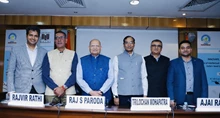
According to forecasts from the India Meteorological Department, several regions including Maharashtra, Odisha, Tamil Nadu, Andhra Pradesh, West Bengal, Jharkhand, Bihar, and Telangana are bracing for a heatwave. Temperatures are expected to rise by 3 to 4 degrees Celsius in these areas. Consequently, the weather office has issued alerts for Thane, Raigad districts, and certain parts of Mumbai, effective from April 27 to 29, cautioning residents to prepare for the intense heat.
As the scorching heat approaches, farmers must brace themselves for the challenges it brings to crop cultivation. Rising temperatures, prolonged droughts, and increased pest pressure pose significant threats to agricultural productivity. However, with strategic planning and proactive measures, farmers can safeguard their crops and mitigate potential losses.
Here are some tips to navigate through the summer season and protect your agricultural investments:
Water Management: Efficient water management is paramount during the summer months. Implement drip irrigation systems or invest in water-efficient technologies to ensure optimal moisture levels in the soil. Schedule irrigation sessions during cooler periods of the day to minimize water loss through evaporation.
Mulching: Apply organic mulch such as straw, hay, or compost to the soil surface around crops. Mulching helps retain soil moisture, suppresses weed growth, and regulates soil temperature, thereby reducing water stress on plants and promoting healthy root development.
Crop Rotation: Practice crop rotation to prevent soil depletion and minimize the buildup of pests and diseases. Rotate crops with deep-rooted varieties to improve soil structure and enhance nutrient uptake. Additionally, alternating crops help break pest and disease cycles, reducing the need for chemical interventions.
Shade Netting: Install shade netting over vulnerable crops to protect them from excessive sunlight and heat stress. Shade netting also helps regulate temperature and reduces water loss through transpiration, creating a more favorable microclimate for plant growth.
Integrated Pest Management (IPM): Implement IPM strategies to manage pest populations effectively while minimizing environmental impact. Monitor fields regularly for signs of pest infestation and adopt biological controls, cultural practices, and targeted pesticide applications as necessary.
Soil Health: Prioritize soil health by integrating organic matter, such as compost and manure, into the soil. Healthy soils with high organic content retain moisture better and support beneficial soil organisms that contribute to overall crop resilience.
Timely Harvesting: Harvest crops at their peak maturity to maximize yield and quality. Delayed harvesting can expose crops to increased heat stress and susceptibility to pests and diseases. So, maintain proper post-harvest handling practices to minimize losses and preserve crop quality.
Varietal Selection: Choose crop varieties that are well-suited to hot and dry conditions. Select heat-tolerant and drought-resistant cultivars adapted to your region's climatic challenges to ensure better performance and yield stability during the summer months.
Protective Coverings: Use protective coverings such as row covers or crop shelters to shield young plants from extreme temperatures, wind, and pest damage. These coverings create a microenvironment conducive to plant growth while offering physical protection against environmental stressors.
Monitor Weather Forecasts: Stay informed about upcoming weather patterns and forecasts to anticipate heatwaves, droughts, or severe weather events. Adjust irrigation schedules and management practices accordingly to minimize crop stress and optimize resource utilization.
With progressive tactics and strategies, crop management will become manageable for farmers. Careful planning, resilience, and innovation, agricultural communities are the need of the hour to thrive in changing climatic conditions.










